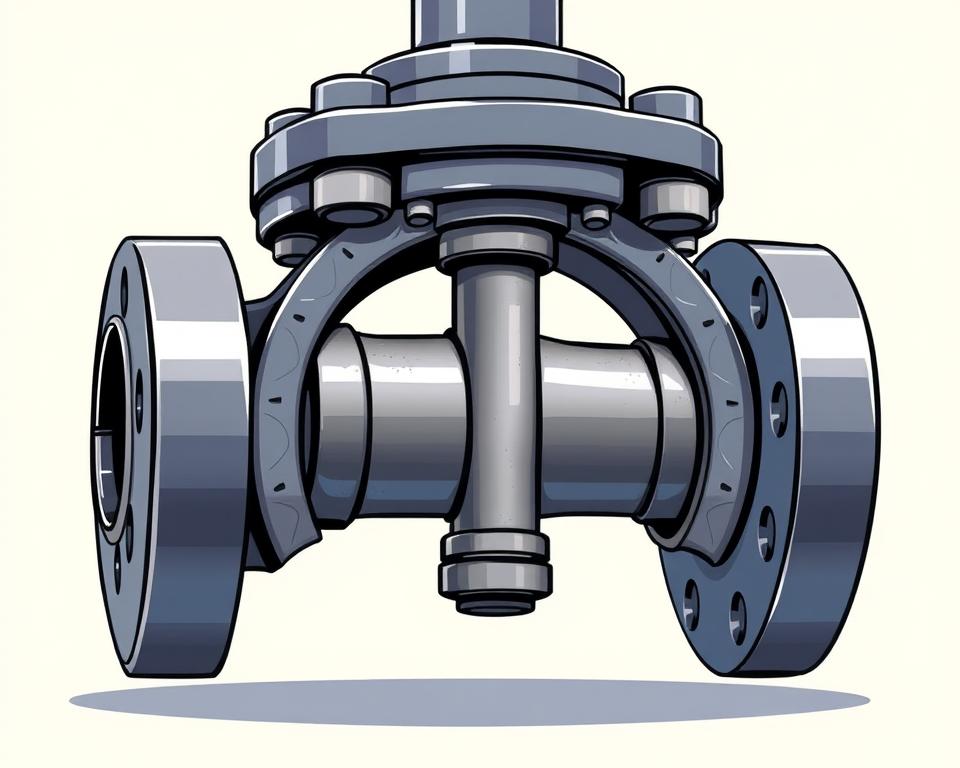Cast Iron Gate Valve Solutions: Rugged Plant Flow Control
Quick stat: More than 60% of public distribution networks depend on traditional shutoff hardware for reliable isolation during emergencies.
Explore our workhorse line of Cast Iron Gate Valve Manufacturer built for extended service life in industrial, commercial & municipal use throughout the U.S.. Every valve combines a rugged body-and-bonnet assembly with a proven gate design to resist wear and reduce corrosion under changing pressure/temperature cycles.
The straight-through gate minimizes flow restriction at full open, letting systems convey water and compatible media with lower pressure drop. Designers and maintenance teams appreciate the service-friendly serviceability, common connection options, and readily available parts that simplify selection and repairs.
This family covers multiple series and pressure classes to match typical duty ranges, end connections, and operator preferences. Count on consistent sealing, consistent operating torque, and cost-effective ownership aimed at uptime and low life-cycle cost.
Key Takeaways
- Built for rugged shutoff and reliable flow control in demanding environments.
- Sturdy construction stands up to wear, corrosion, and mechanical stress.
- Gate design delivers minimal resistance and reduced pressure loss.
- Available in multiple series and class ratings to match typical requirements.
- Service-friendly design, common parts, and consistent sealing boost uptime.
Reliable, Precise Flow Control with Cast Iron Gate Valves
Purpose-built shutoff valves with precision wedges and precision seats provide consistent performance across startup, steady-state, and shutdown cycles. Solid iron bodies and close-tolerance seating enable dependable sealing. That consistency supports safe isolation and minimizes unplanned downtime.
Smooth operating feel reduce handwheel effort and help techs position the wedge accurately. Standard stems and accessories allow easy adaptation to manual or automated controls. Reduced effort streamlines routine checks and repairs.

Stem Types and Performance
| Feature | OS&Y-style Rising Stem | Nonrising Stem |
|---|---|---|
| Position indication | High — easy visual readout | Low — minimal external cue |
| Overhead clearance | Needs headroom | Suited to pits or vaults |
| Maintenance | Straightforward inspection | Compact with comparable life |
At full open, the full-bore passage yields minimal headloss and smooth throughput. Tight shutoff cuts leakage risk and maintains target pressure for downstream equipment. As a set, these features lower life-cycle cost and enhance system uptime across general commercial and light-industrial applications.
Specs, Designs, and Options for Cast Iron Gate Valves
Key design selections—body alloy, stem style, and flange standard—influence performance, fit, and service ease.
Body and Bonnet Build
The body and bonnet are made from cast iron for strength and vibration dampening. Machined guides keep the gate aligned for reliable sealing.
Rising Stem vs Non-Rising Stem
A rising stem gives a clear visual position indicator and is simple to inspect but requires overhead space. A non-rising stem saves overhead space and protects threads within the bonnet.
Both stem designs work with common handwheels and can be prepared for actuators or external position indicator accessories when automation is required.
Class 125 Guidance
Class 125 rating is typical for water and general service within moderate temps. Verify with published pressure-temperature limits to ensure suitability for the intended operating envelope.
Flange connections and dimensions
| Item | Standard | Notes |
|---|---|---|
| Flange drill pattern | Standard ASME drilling | Matches common piping systems |
| F2F length | Standard series lengths | See datasheet for dimensions |
| Bolting | Specified grade/torque | Gasket choice influences seal |
- Sizes and series: available from small line sizes to larger mains with several series and trim packages for wear resistance and ease of service.
- Trim choices and packing: seat and wedge materials optimize tight shutoff and longevity; improved packing with bonnet gaskets tighten stem sealing.
- Integration tips: confirm end-to-end dimensions, flange bolt patterns, and torque requirements before installation.
Applications, Compliance, and System Integration
Applications for these Resilient Seated Gate Valve cover municipal water mains, building risers/standpipes, and pump-room isolation points where consistent shutoff is essential.
Water distribution and fire systems commonly apply these as sectional/control points. They deliver readable position and strong shutoff for life safety and utility networks.
Flow & Shutoff in Bi-Directional Service
The gate design allows shutoff in either flow directions when installed to manufacturer instructions. This versatility eases layout choices and works with redundant runs.
Serviceability and Bonnet Integrity
Accessible bonnet fasteners, guided gates, and replaceable packing make inspection and repacking faster. Correct packing compression maintains stem sealing during frequent operating cycles.
OS&Y Indicators and Best Practices
Outside indicators and OS&Y styles give visible open/closed status for inspections. Even with bi-directional service, adhere to the recommended orientation and clearance guidance to ensure safe operation.
| System | Key Benefit | Spec Check |
|---|---|---|
| Municipal mains | Secure isolation | Check Class 125 envelope |
| Sprinkler/standpipe | Clear status for inspectors | Provide indicator/OS&Y style |
| Pump stations | Maintenance friendly | Match flange and face-to-face dimensions |
Conclusion
Choose proven shutoff equipment combining sturdy construction and predictable flow control.
You get durable isolation and consistent control for water and utility applications. Expect easy installation and service-friendly upkeep for long-term reliability.
Core specs include Class 125 rating, a strong body/bonnet set, and designed stem sealing to maintain performance across facility environments.
Multiple series and common sizes, plus handwheel or actuator-ready options, streamline specification. Clear position indication and smooth stem travel enhance daily operation and response under variable conditions.
The wedge-and-seat design delivers leak-tight closure and low pressure loss. Verify sizes, end connections, and accessories at specification time to speed procurement and commissioning.
Choose valves manufactured to stringent standards. We can review class, sizes, and series to align selections with your operating and maintenance goals.